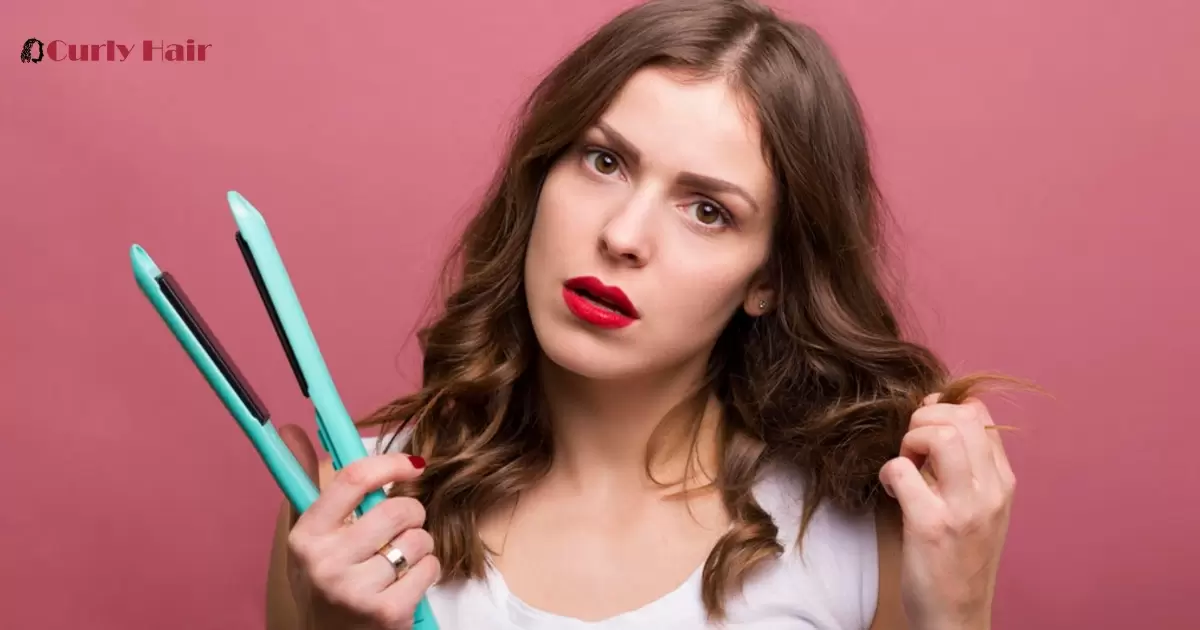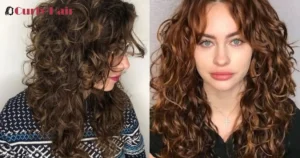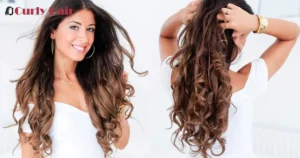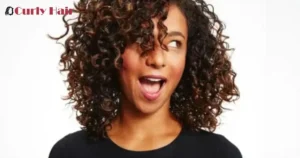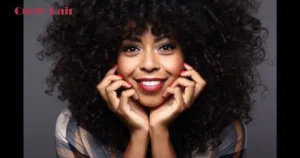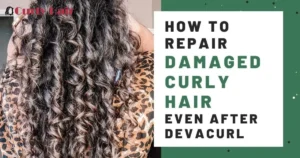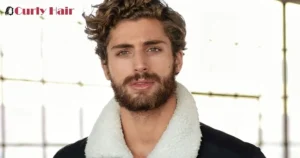Hair can naturally have different textures in different areas, like being wavy underneath but straight on top. This happens due to various factors like how the hair grows out of the follicles, the effects of gravity, and the hair products used.
Do you struggle with why is my hair wavy underneath but straight on top? It’s a frustrating issue many face. Your hair texture seems inconsistent and unruly. But understanding the reasons behind this pattern can help you embrace your unique hair. Let’s dive into the causes and find ways to work with your hair’s natural tendencies.
Having wavy hair underneath and straight on top is common and normal. This hair pattern arises from factors like genetics, growth patterns, and product use. Keep reading to learn more about embracing your natural hair.
Key Takeaways
- It’s common for hair to have different textures due to natural growth patterns.
- Understanding your hair type helps in choosing the right products and styling techniques.
- Use mild shampoos, and regular trims, and avoid overwashing for healthy, uniform hair.
- Embrace your hair’s natural texture and find a routine that works best for you.
What Causes Hair To Be Straight On Top But Wavy Underneath?
| Causes | Description |
| Different Growth Patterns | Hair on top may be exposed to more external factors, like sunlight and friction, leading to a straighter texture. The hair underneath is more protected, resulting in a curlier texture. |
| Genetic Factors | Genetics play a significant role in hair texture. Some individuals naturally have hair that is straight on top and wavy underneath, which is determined by the genes inherited from their parents. |
| Hormonal Influences | Hormonal changes can affect hair texture. For example, during puberty or pregnancy, hormonal fluctuations can alter the structure of the hair, leading to changes in texture, including straightness or waviness. |
Hair can be straight on top but wavy underneath due to different hair growth patterns. The hair follicles on the scalp can produce straight hair, while those on the nape of the neck may produce wavy or curly hair. This variation is genetic and can result in mixed textures on the same head of hair.
Another factor is how hair is styled and cared for. Tight hairstyles or frequent use of heat styling tools on the top of the head can straighten the hair, while the underneath layers, protected from such styling, retain their natural wave or curl pattern. Additionally, the hair’s natural oils and moisture distribution may differ between the top and bottom layers, affecting their texture.
Can I Get The Top Of My Hair To Curl Like The Bottom?
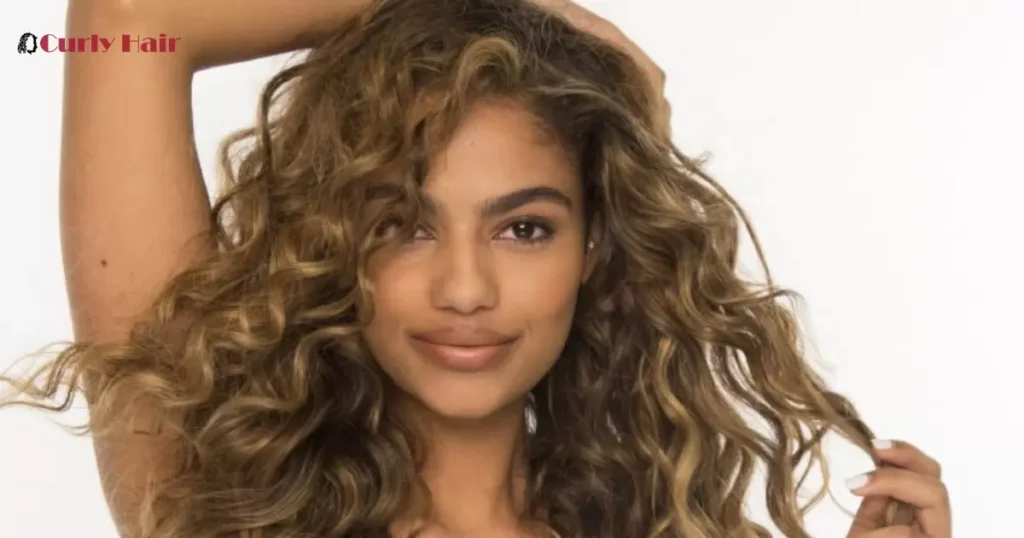
To achieve consistent curls from top to bottom, consider your hair’s natural texture and the styling products you use. Start with a hydrating shampoo and conditioner to nourish your hair. Then, apply a curl-enhancing cream or mousse while your hair is damp to define your curls.
Use a diffuser attachment on your blow dryer to dry your hair, scrunching it gently as you go. For more defined curls, use a curling wand or iron on the top sections of your hair. Finish with a lightweight hairspray to hold the curls in place.
Consistency in curl patterns can be influenced by genetics, hair care routine, and styling techniques. Experiment with different products and techniques to find what works best for your hair. Regular trims can also help maintain a more uniform curl pattern. Consider consulting with a hairstylist for personalized advice based on your hair type and desired style.
Genetics And Hair Structure
Genetics plays a key role in determining your hair structure. It influences whether your hair is German curly hair, wavy, curly, or coily. Hair type is determined by the shape of the hair follicle. Straight hair has round follicles, while wavy and curly hair has oval and asymmetrical follicles, respectively.
Hair structure also depends on the arrangement of proteins in the hair shaft. The protein called keratin makes up the hair shaft and gives it strength and structure. The way keratin molecules are arranged in the shaft determines the hair’s texture and curl pattern. Factors like ethnicity and ancestry can influence these protein arrangements, leading to different hair types.
Hormonal Factors Influencing Hair
Hormonal Factors Influencing Hair:
- Hormones play a vital role in hair growth and texture.
- Imbalances can lead to changes like waviness or straightness.
- Hormones like androgens and estrogens influence hair follicles.
Effects on Hair Texture:
- Hormonal fluctuations can alter hair follicle shape.
- Androgens can increase sebum production, affecting texture.
- Hormonal changes during puberty and pregnancy can impact hair.
Damage And Breakage Patterns
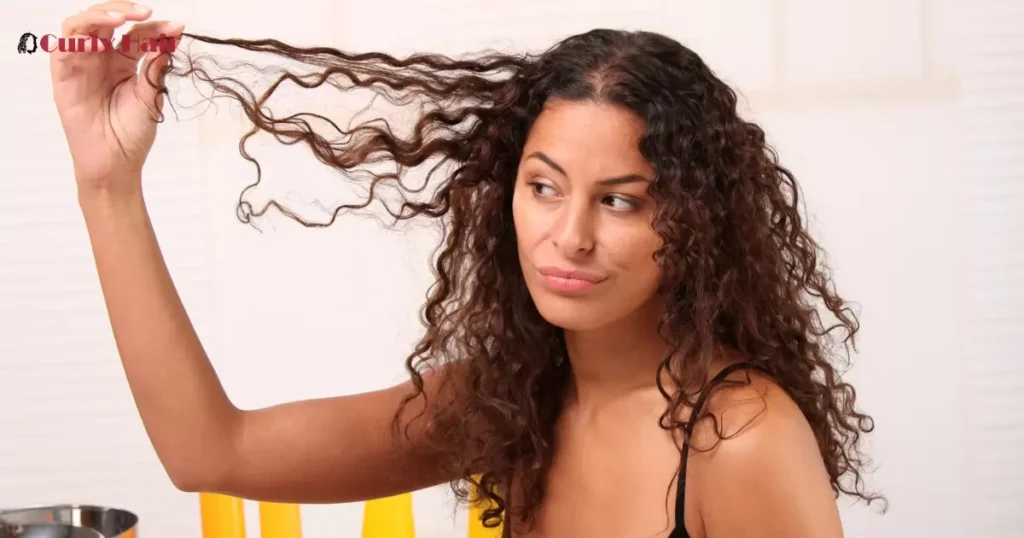
Damaged hair often shows signs of breakage, such as split ends and frizz. These patterns can indicate the need for better hair care practices or professional treatment.
Breakage patterns can vary based on hair type and the extent of damage. Understanding these patterns can help in choosing the right products and treatments to restore hair health.
Transitioning From Straight To Wavy
Transitioning from straight to wavy hair can be a gradual process, often influenced by genetics and hair care routines. As your hair grows, the new growth may exhibit a different texture, leading to a mix of straight and wavy sections. Embracing this natural change can be empowering, allowing you to explore new hairstyles and textures.
To enhance the transition, consider using products that promote wave formation, such as sea salt sprays or mousse. These products can help define your waves and add texture to your hair. Additionally, adopting a hair care routine that includes regular moisturizing and minimal heat styling can help maintain the health and shape of your waves.
Embracing Your Natural Hair Texture
Embracing your natural hair texture is about celebrating the uniqueness of your hair. It’s a journey of self-acceptance and confidence in your appearance. By embracing your natural texture, you’re also embracing your cultural identity and heritage.
Understanding your hair’s natural pattern can help you choose the right products and styling techniques. Embrace the versatility of your hair, whether it’s wavy, curly, or straight. Experimenting with different styles can be fun and empowering, allowing you to express yourself creatively.
Troubleshooting Uneven Hair Waves

Troubleshooting uneven hair waves can be a frustrating experience, but understanding the root cause can help you find a solution. One common reason for this issue is inconsistent hair texture, where the top layer of hair may be straighter than the underneath. This can happen due to genetics or damage from heat styling or chemical treatments.
Another possible cause is an improper hair care routine. Using heavy products or not applying them evenly can weigh down the top layer of hair, making it appear straighter. To address this, try using lighter products and ensure thorough and even application from root to tip. Consider your hair-drying method, as air-drying or using a diffuser can help enhance natural waves without flattening the top layer.
Identifying Underlying Hair Issues
To identify underlying hair issues, start by examining your scalp for signs of dryness, flakiness, or redness, which could indicate conditions like dandruff or psoriasis. Next, consider your hair care routine, including the products you use and how often you wash your hair. Poor-quality products or overwashing can lead to dryness and damage.
Achieving Consistent Hair Texture
To achieve consistent hair texture, use sulfate-free shampoo and conditioner to maintain moisture balance. Limit heat styling and opt for air drying or gentle techniques. Regular trims help prevent split ends, maintaining uniform texture. Consistent hair care routine, including deep conditioning treatments, promotes overall hair health and texture.
Adapting Hairstyles To Hair Type
Adapting hairstyles to your hair type is crucial for maintaining healthy and stylish hair. For curly hair, consider styles that enhance your natural texture, like bouncy curls or defined coils. Those with straight hair can opt for sleek, straight styles or add volume with layers. If you have wavy hair, try tousled waves or beachy curls for a relaxed look. It’s also important to use the right products for your hair type to keep it looking its best.
Maintaining Healthy, Uniform Hair
To maintain healthy, uniform hair, start by using a mild shampoo and conditioner suitable for your hair type. Avoid overwashing, as this can strip natural oils and lead to dryness. Regular trims every 6-8 weeks can help prevent split ends and promote overall hair health.
Hormonal Changes And Hair Waves

Hormonal changes can significantly impact the texture of your hair, including the formation of waves. Fluctuations in hormones like estrogen and testosterone can alter the hair follicles’ shape, leading to changes in how your hair grows.
During puberty, pregnancy, or menopause, hormonal shifts can cause previously straight hair to become wavier or curly. These changes are often temporary and can revert once hormone levels stabilize.
Stress can also affect hormone levels, potentially leading to changes in hair texture. Cortisol, the stress hormone, can disrupt the hair growth cycle, leading to hair loss or changes in texture. Managing stress through relaxation techniques, exercise, and a healthy diet can help maintain hormonal balance and promote healthier hair.
Stress And Its Impact On Hair
Excessive stress can lead to hair loss or thinning. It disrupts the hair growth cycle, causing more hairs to enter the resting phase and eventually fall out. Managing stress through relaxation techniques like yoga or meditation can help reduce hair-related issues.
Stress impacts the body’s hormone levels, which can affect the hair follicles. This disruption can lead to hair thinning or shedding. Adequate sleep and regular exercise can also help manage stress levels, promoting healthier hair. Consulting with a healthcare professional or dermatologist can provide personalized advice and treatments for stress-related hair issues.
Nutritional Deficiencies And Hair Texture
Nutritional deficiencies can affect hair texture. For example, a lack of protein can lead to brittle hair, while a deficiency in vitamins A and E can cause dryness and dullness. Iron deficiency may result in hair thinning and slow growth. It’s important to maintain a balanced diet rich in vitamins, minerals, and proteins to support healthy hair texture. Consider consulting a healthcare professional for personalized advice.
To improve hair texture, focus on nutrient-rich foods like fruits, vegetables, lean proteins, and whole grains. Incorporate foods high in omega-3 fatty acids, such as salmon and walnuts, to promote hair health. Stay hydrated and limit your intake of processed foods and sugars, which can impact hair quality. Regular exercise and stress management techniques can also contribute to overall hair health and texture.
Why Is My Hair Curly Underneath But Straight On Top?
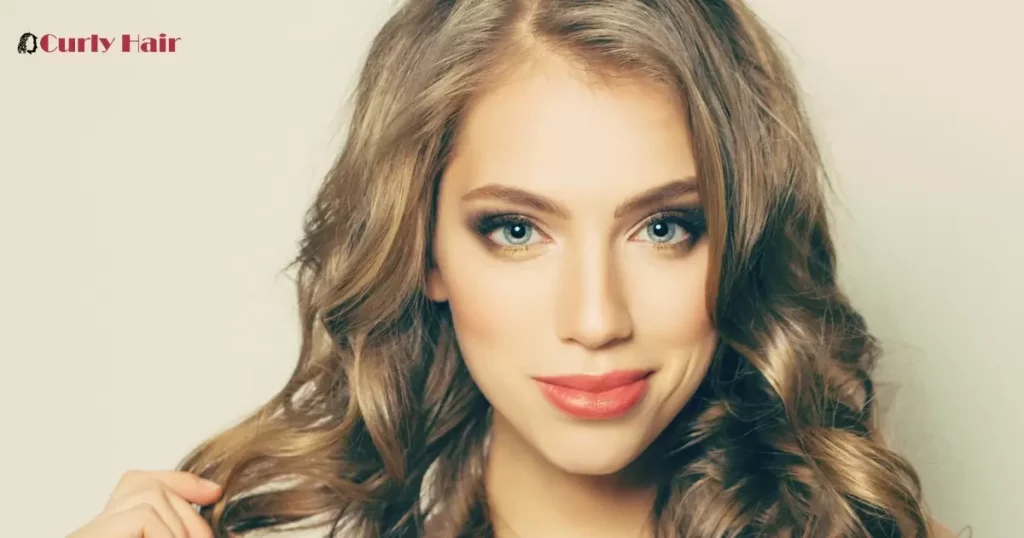
Having curly hair underneath but straight on top can be due to various factors. One reason could be the natural pattern of your hair growth, which can differ across your scalp. Another possibility is that the top layer of your hair is more exposed to environmental factors like sun and wind, which can affect its texture.
Your hair care routine and the products you use can impact the curl pattern, so experimenting with different techniques and products may help achieve a more uniform look.
Curly And Straight Hair Mixed How To Style?
Styling hair that is a mix of curly and straight textures can be challenging but achievable with the right techniques. Begin by washing and conditioning your hair with products designed for curly hair to enhance natural curls. Use a wide-tooth comb to detangle gently and avoid damaging the curls. Apply a curl-enhancing cream or mousse to the curly sections, scrunching them to define the curls.
For the straighter sections, use a heat protectant spray and a flat iron to smooth them out. Blend the two textures by using your fingers to twist and tousle the hair gently. Finish with a light-hold hairspray to set the style without weighing down the hair.
Toddler Hair Straight On Top Curly Underneath
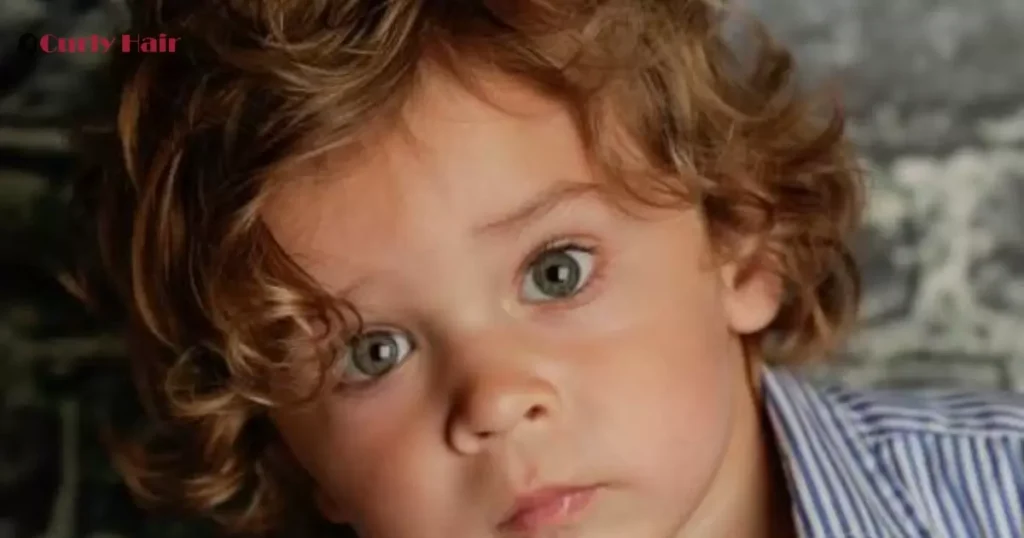
It’s common for toddlers to have straight hair on top and curly underneath. This is often due to the different growth patterns of hair. The hair on top may be exposed to more external factors, like sunlight and friction, which can result in straighter hair.
To manage this hair type, use a gentle shampoo and conditioner suitable for your toddler’s hair texture. Avoid overwashing, as this can strip the natural oils and cause dryness. Use a wide-tooth comb to detangle the hair gently, starting from the ends and working your way up to prevent breakage. Keeping the hair well-moisturized with a leave-in conditioner or natural oils can help maintain its health and reduce frizz.
Frequently Asked Questions
Why is the underside of my hair curly?
The underside of your hair is curly due to the way hair grows and is influenced by factors like genetics and hair care practices.
Why is half my hair wavy and half straight?
Hair can be wavy or straight due to genetic factors and hair growth patterns, leading to varying textures on different parts of the head.
Why does the underneath of my hair not curl?
The underneath of your hair may not curl due to different growth patterns and exposure to external factors, leading to a straighter texture.
Conclusion
In conclusion, the phenomenon of hair being wavy underneath but straight on top is quite common and is often due to natural growth patterns and exposure to external factors. Understanding this can help you better care for your hair and manage its texture. By using the right products and techniques, such as mild shampoos, and regular trims, and avoiding overwashing, you can maintain healthy and uniform hair.
Embracing your hair’s natural texture and learning how to care for it can lead to healthier, more manageable hair. Your hair is wavy, curly, or straight, proper maintenance and styling can help you achieve the look you desire. By following these tips and staying consistent with your hair care routine, you can enjoy beautiful, healthy hair that looks great from top to bottom.
